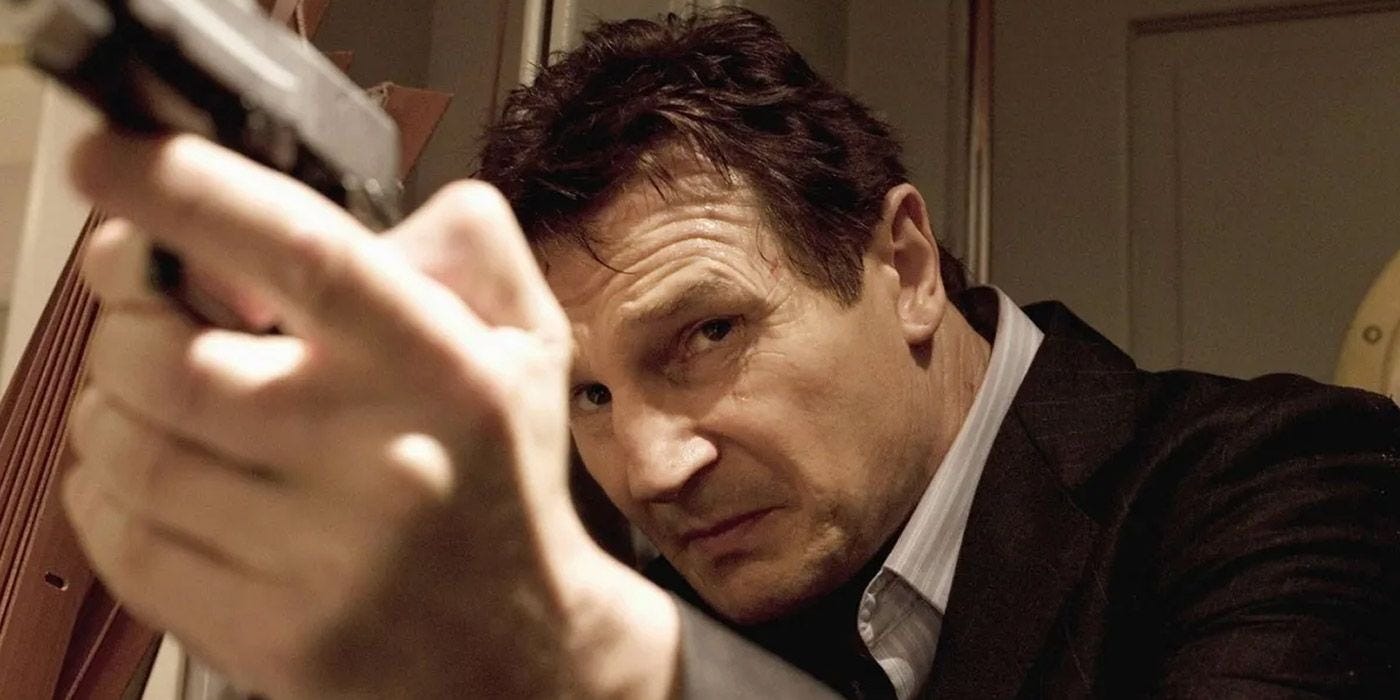The Reign of the Macho Action Guy Archetype
John Matrix taught me that even a tree trunk can serve as a solid plot point.
Summer heat, lemon ice cream, and the classic Spanish open-air cinema—one giant screen set up in the plaza of my neighborhood, and the entire community gathered before it. On screen: Commando. We didn’t know exactly what to expect. And then, in the first minute, he appears. A man with impossible muscles, carrying a tree trunk like it’s a damp towel. Not even sixty seconds in, and you already knew what was coming.
Explosions, killer one-liners, an army of bad guys shooting like they were all nearsighted, and a hero who didn’t even mess up his hair when blowing up a cabin.
John Matrix introduced me to the world of the Macho Action Guy. Everything in that movie was so absurd, it became glorious. Guns everywhere, enemies falling like dominoes, and Matrix dropping punches and punchlines with equal ease.
It was like watching a living cartoon of everything an action hero was supposed to be… and I loved it.
But this figure wasn’t born in the ’80s. What the screenwriters did was strap an M-16 onto an ancient myth. Because in Greek mythology, Heracles solved his problems the same way Matrix did: with muscles, rage, and let’s say, minimal reflection. When he had to clean the Augean stables, he didn’t ask for help or seek consensus. He rerouted two rivers. Diplomacy? No, thanks.
In Norse mythology, Thor handed out hammer blows like club flyers in Magaluf. Both embody the simple logic of the Macho Action Guy.
If something doesn’t fit, smash it until it does.
History has its versions too. Theodore Roosevelt, with his overflowing energy, his mustache, and his love of physical challenges, seemed like a character written by a coked-up action movie screenwriter.
Or Che Guevara, turned pop symbol, always with his rifle, always defiant. One represented order and institutional power. The other, subversion and rebellion. But both were men who led with force and physical presence.
This archetype has its own instruction manual: massive physique, stone-cold expression, supernatural combat skills, unforgettable catchphrases, and a resilience to bullets, explosions, and stab wounds that defies science. He never cries, rarely doubts, and always—always—gets back up. His code of values is dictated by instinct.
Protect your own and punish the others.
He doesn’t reason. He acts.
There’s the patriotic mercenary like Rambo, who fights for his flag but doesn’t trust it.
The on-the-edge cop like Martin Riggs, full of trauma and with a hair-trigger.
The avenging father like Bryan Mills, who turns rage into precision.
The road gladiator like Mad Max, surviving in shattered worlds.
And the serene warrior like John Wick, blending elegance and violence in a deadly ballet.
They all share something. Conflict chooses them—but they finish it. And how they finish it.
In the story of Commando, John Matrix is the gravitational center. There’s no internal arc, no moral dilemma. Just a kidnapped daughter and countless enemies to crush. The whole film orbits him like satellites around a musclebound planet. And the strangest part is that within that brutal simplicity, there’s a heart. Deep down, he’s a softie. He’s a father. And that humanizes him just enough to make it work. He doesn’t need redemption—just to get his daughter back. And for that, he needs weapons. Lots of weapons. Oh, and killer one-liners.
Today, the Macho Action Guy survives as a pop icon. He’s no longer the dominant figure on the marquee, but he still holds his ground among all the complex antiheroes and high-end trauma. Because deep down, there’s something comforting in that simple logic:
If they hit you, hit back harder.
If they take something from you, take it back in a hail of bullets.
If you’re surrounded, laugh and throw a grenade.
So if tomorrow chaos broke out and everything went to hell…
Who would be your John Matrix?
Who’s the Macho Action Guy that would inspire you to cross the line and take control?
I’m listening.






